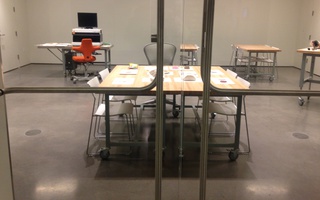Harvard affiliates and local community members gathered for a panel discussion commemorating the reissue of The Rarest of the Rare: Stories Behind the Treasures at the Harvard Museum of Natural History, a book showcasing some of the most unique objects within the museum’s diverse collection. {shortcode-8f5ceb6a053b6ad5dadba8cc8653b9e70346398e}
During the panel in the Geological Lecture Hall on Thursday evening, speakers highlighted additional scientifically and historically significant items in the museum’s possession.
The first speaker was Nancy Pick, author of Rarest of the Rare, who spoke about a few of the items highlighted in the book.
“The team working on the book had decided that it should showcase 60 specimens of animals, plants, and minerals from Harvard’s vast collections,” said Pick. “Some specimens had historic significance. Some had scientific importance and some just had a good story to tell.”
Pick also discussed some of the museum’s current projects, such as explorations in the field of de-extinction and the digitization of Harvard collections
Raquel Alonso-Perez, curator of the Harvard Mineralogical & Geological Museum, focused on two objects—the Hamlin necklace, a historically significant piece of jewelry, and a rare gold spire—during her portion of the discussion.
Panelist Donald H. Pfister, a professor of systematic botany and former interim dean of the College, stressed the importance and value of exploring the Harvard collections in order to find unexpected objects.
“Our collections are full of these materials that we haven’t documented, [that] we don’t understand particularly, that we need to look at and examine,” he said. “So in the end our collections are full of rare and interesting objects both discovered and probably just as many undiscovered.”
James Hanken, a professor of Biology and director of the Harvard Museum of Comparative Zoology, showed a digital representation of an earthworm’s anatomy and said that such innovative uses of technology could serve to enrich knowledge found within the collections.
Jonathan E. Chester, a student at William James College who attended the event, said that the discussion served to promote an interest in the narrative behind certain scientific objects as much as the objects themselves.
“I’m not so much focusing on particular items in the collection or particular specimens as much as being curious on some of the backstory,” he said, adding that he was interested in “some of the human stories behind them.”
Read more in Faculty News
NYU Professor Discusses Black Lives Matter, MizzouRecommended Articles
-
UNAPPRECIATED OPPORTUNITIES.One of the regrets which Seniors express on leaving College is at their neglect of their opportunities for seeing places
-
The Additions to the Agassiz and Peabody Museums.The new additions to the Agassiz and Peabody Museums, which were begun early last spring, have been pushed forward so
-
 Pictures at an Exhibition
Pictures at an Exhibition -
 Newly Opened, Art Museums Prepare To Engage Undergrads
Newly Opened, Art Museums Prepare To Engage Undergrads -
 Gathering the Galleries
Gathering the Galleries













